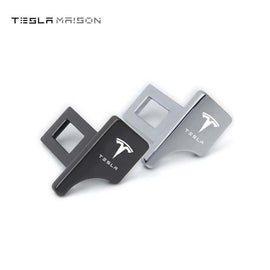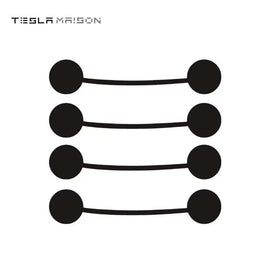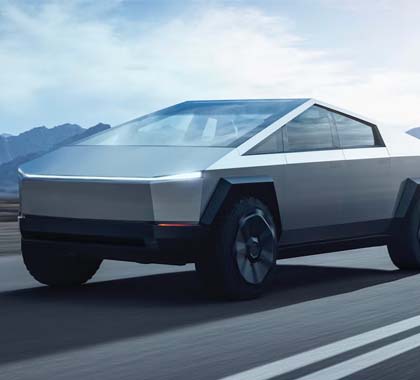Tesla cars use lithium-ion cells, which are getting a bad rep from the press recently due to cases of cars catching fire. Supporters of the company will claim that gas-powered car fires are commonplace and don't receive much attention.
Why do Tesla cars catch fire? Tesla cars' lithium-ion batteries are susceptible of a phenomenon called "thermal runaway", which is where temperatures rapidly increase until they explode and catch fire. This can occur when the battery pack has been damaged through a collision or any other type of trauma.
Tesla cars have caught alight in a few instances. However, the majority are caused by a crash or excessive speed. This problem can happen whether you drive an electric car or one with a combustion engine.
Why Tesla Cars Catch Fire?
Most Tesla fires seen are due to battery trauma. This can include a high-speed crash.
On one occasion, the driver drove at speeds between 75-90 mph along a road where 50 mph was posted. Another incident occurred when the driver reached 116 mph.
Brock Archer is an auto-extrication specialist and expert in fire rescue. He told Business Insider about the Tesla fires that "almost every vehicle (that caught fire), was operating outside agency testing parameters. The vehicles were traveling too fast.
Although most Tesla fires have occurred as a result of battery trauma, there were several instances when the Tesla battery caught on fire even if it had not been damaged. Archer states that one battery cell per billion is affected by spontaneous combustion.
Tesla Battery
Tesla batteries are composed of thousands of cells which are arranged into modules. The idea of one battery out of a million cells is a bit overwhelming. Tesla plans to make two million battery cells a day.
A battery that is damaged due to an impact, water damage or malfunction will see the temperature increase quickly. The increase in temperature then causes the increase to be spread to another cell. This process, known as thermal runaway can end up with a fire. In some cases, the cellular propagation inside the batteries can be stopped.
A battery pack fire is usually caused by an overcharged cell. It is the primary drawback to lithium-ion chemistry. The manufacturing process can be a factor in fires as well, because a single defective cell is enough to cause thermal runaway.
The fact that most incidents occurred when the car was fully charged or in the charging process is another factor.
Thermal Runaway
Lithium-ion batteries have a flammable liquid called electrolyte. It is therefore possible for the electrolyte to ignite if there is a short circuit in the cell. The pressure then rises rapidly until the cell bursts.
When a cell ruptures, it can cause a temperature to rise by about 1,832 . The rapid rise in temperatures can easily spread to other cells nearby.
Smoke, explosions, and fire can result from the domino effects of temperature-raising cells.
How to prevent an electric car from catching fire?
Most electric car fires occur as a consequence of an accident or driving at high speeds. To prevent your battery from overheating or catching fire, you should drive within the speed limit.
The battery can also catch on fire when you accidentally drive over sharp objects or debris. You should always pay attention to what type of road surface you are on and watch out for sharp objects or debris.
Thermal Runaway Prevention
The engineers can add three layers of protection to the battery in order to reduce the effect of thermal running away.
- Cell to cell - This protects by using engineered materials to put in-between each cell. It's the toughest protection to create.
- Modules to modules - This insulation is placed between modules to prevent thermal runaway from spreading to adjacent modules. This type provides significant weight savings over cell-tocell protection.
- Pack level - This is the simplest, most affordable form of protection. It is designed to give passengers more time in order to get out of the car.
The thermal protection options available to automotive manufacturers are either active or passive.
Active Management relies primarily on cooling technologies in order to add energy or remove it using a substance such as air or refrigeration cooling.
Passive management is based on the thermodynamics that heat transfer occurs through conduction, radiation, and convection. Passive cooling for batteries can include PCMs, heat shields, and metal heat sinks. It is also the least expensive.
Vehicle Fire Data
Tesla vehicle fires, while rare, are often reported by the media. This is because electric cars do not have as much popularity as vehicles powered by a combustible motor.
Here is the data that explains the rate at which Teslas catch fire:
- The National Fire Protection Association's (NFPA) statistics and that of the U.S. The Department of Transportation shows that there is one vehicle fire in every 19,000,000 miles of travel in the United States.
- According to NFPA figures quoted on Tesla's website between 2012 and 2018, there was only one Tesla fire per every 170 million miles driven.
Tesla fires have a 10x lower probability than the average vehicle fires, according to these data.
Tesla has also reported that 15% of Tesla vehicle Fires are caused due to structure fires or arson.
Tesla Battery Software Update
Tesla has released new software to enhance the battery life in its cars and ensure safety.
The update affects the thermal control system for the battery pack. roadshow reported that Tesla created this update out of a sense of caution, following an incident where a Tesla caught alight in a Hong Kong car park structure.
Tesla has stated that their team of battery specialists uses data to analyze accidents and determine the root cause.
They said: “Although fire incidents involving Tesla vehicles are already extremely rare and our cars are 10 times less likely to experience a fire than a gas car.”
The software update allows the battery management systems to be adjusted for cooling. The update's goal is to more effectively manage each cell’s temperature and charging level.
Tesla Takes Other Fire-Protection Measures
Tesla's cars are now equipped with enhanced underbody safety to help reduce fire risks.
Elon Musk - Tesla's Chief Executive - outlined the new protection measures. They include a titanium shield under the body with two deflector plates made of aluminum.
Tesla's Website explains that the battery packs of Tesla vehicles will be damaged in an accident only very rarely.
It states: “In the extremely unlikely event that a fire occurs, the state-of-the-art design of our battery packs ensures that its safety system works as intended.”
Tesla has the ability to use billions of data from the global fleet of cars it drives to help understand different types of accidents. The over-the-air features allow them to add safety features and enhance the vehicle.
First Responders Face a Safety Challenge
Electric car fires are more difficult to control than fires caused by combustible engines.
This fire cannot be extinguished with dry chemicals or foam. It can only be put out using 500-8,000 gallons.
A survey of fire departments across Metro Detroit revealed that most first responders have limited experience in dealing with fires that occur with electric cars.
Fire officials told Detroit Free Press they have been training, and are using online and portable resources to map strategies.
National Fire Protection Association created practices for vehicle flame safety. You can find a five-section manual for it on the website.
In a nutshell, these precautions are:
- The car should be kept away from other cars and buildings after a car accident because it could ignite again.
- Locate and remove the power source from the car
- To keep the car battery cool, use large amounts of water on a regular basis.
In order to turn off the power to an automobile, firefighters must first be able to identify it and locate its source of energy. The car battery case of electric cars is often difficult to reach, and firefighting sprays or dry chemicals are not able to penetrate it.
It is best to use a lot of water when putting out an electrical car fire. This will keep the battery cool, preventing it from reigniting.
For a few days, keep your car at least fifty feet from any other vehicles or buildings.
Are electric vehicles more likely to catch on fire?
Electric cars catch fire less often than combustion engines.
Tesla said in a statement to Business Insider, “Tesla vehicles achieved the lowest probability of injury of any vehicle tested by the US government safety rating program” and “On our fleet of over 500,000 electric cars, we know that a Tesla vehicle is ten times less likely to experience a fire than a gas car.”
Tesla claims gasoline vehicles are 11 times as likely to catch a fire as their vehicles. They claim that fires per million miles driven is the best way to compare.
- Approximately 40 fires have occurred in the 300,000. Teslas that have been used for 7.5 billion mile journeys. There are about five fires reported for every billion kilometers.
This is compared with a rate for gas vehicles of 55 fires every billion miles.
Battery Fires are Slower to Ignite than Gasoline Fires
The ignition of a battery is delayed compared to a gas-powered car. Sometimes the delay in ignition is beneficial as it gives passengers the time they need to exit the vehicle before a fire breaks out. A gas vehicle will ignite immediately if a spark of flame reaches it.
On a different note, a delay may be detrimental. The fire may begin long after the battery has been damaged if the driver was unaware of the incident. For example, he might have driven over debris which caused the damage. Even days after.
A lithium-ion battery is damaged, the cellular propagation takes place. This leads to an increase in temperature for one cell which, in turn, raises temperatures of other cells. This chain reaction can take a long time.
The time required for a fire to ignite is what makes a difference between flammable liquids and gasoline. Gasoline ignites almost instantly when it comes into contact either with a fire or a spark. It takes a while for battery fires to reach the temperature necessary to ignite.
What are the experts and stakeholder groups?
A report by the National Highway Traffic Safety Administration, 2017
The report stated that electric vehicles may be less prone to fire or accidents than gasoline-powered vehicles.
After CEO Elon Musk took to Twitter to make a statement, “Over a million combustion engines (it’s right there in the name!) car fires per year & thousands of deaths, but one Tesla car fire with no injuries gets biggest headlines.”
Steven Risser, a researcher studying electric-vehicle safety, said, in a report funded by NHTSA. “There are hundreds of conventional car fires a day, compared with one every once in a while with an EV.”
Tesla Vehicle Batteries
Batteries made of lithium-ion power Teslas. Their battery system is often called an energy-storing device. This system consists of 6,831 Li-ion cells. Tesla's Lithium Ion Battery System is the best commercially available battery technology available today.
After some time, batteries start to lose capacity. This in turn reduces driving range. There can be two types of battery aging.
- Cycle life aging
- Calendar aging.
These aging mechanisms can be viewed as separate forces that overlap.
Different batteries age differently depending on their cycle life or calendar life. Both aging mechanisms are affected by temperature and moisture.
1. Cycle Life
Manufacturers define cycle life by the number of discharge-charge-discharge cycles it takes to reduce the cell's original capacity.
The cells do not really die, they just lose their capacity. Li-ion cells can be affected in different ways, with some factors being built right into them.
Other factors that impact the cycle life are the type of cell used.
- Avoiding high and low charges. Voltages greater than 4,15, which equals about 95%, and lower than 3,00, which equals about 2%. High and low charges put more pressure on the cells.
- Avoiding charging at very high rates. The life of a cell can be reduced if you charge faster than the two-hour mark.
- Avoiding Charging at Temperatures Below 0 . Tesla design heats the Pack before Charging at Cold Temperatures
- Avoiding very high discharge rates. Tesla's battery pack is designed so the current required by each cell at maximum discharge is not excessive.
2. Calendar Life
Even though the battery may be stored unused, Li-ion cell capacity will decrease over time. During the first 12 months of battery life, the capacity is the lowest. It will then continue to decrease over the next year.
Li-ion battery life can be affected by two factors: the average temperature of the environment and how long it is charged at high levels.
Batteries can last the longest when they are kept in a cold place at a low charge.
Batteries that are fully charged and stored in higher temperatures will age the most quickly.
Tesla uses liquid cooling to keep the battery temperature at the appropriate level. The system strives to keep temperatures under 35 degrees Fahrenheit (95degF) and below average lifetime temperatures of 25 degrees Fahrenheit (77degF).
Battery's State of Charge During Storage
One of the major factors in calendar aging occurs when the battery is charged during storage. Cells that are overcharged will lose their capacity faster.
The option to charge only 50% is available for drivers who do not need the entire vehicle range during the next few excursions. Tesla recommends only doing a full recharge when you need it.
Tesla has made an effort to limit the speed at which aging can occur and how much range is lost by selecting and designing cells that have better cooling systems.
They also manage charge states. Teslas claims a battery pack is:
- The driving range is more than 100,000 miles
- The battery pack has a life expectancy of more than five.
In the end, the pack will have a lower capacity than when it began.
Basic Safety Rules for Charging Your Tesla
Tesla charging is an option that allows the driver of a Tesla to charge his car anywhere he parks it. As a main charging method, they recommend home or office charging. You can also charge at charging stations in public.
Home/Public Charging
Tesla wall chargers offer the fastest at-home charging. These wall plugs are available at all Tesla Service Centers as well as online through the Tesla shop.
It only takes three simple steps to install the connector.
- Find a local electrician to get a price.
Tesla recommends that the wall plug be installed near an electrical unit in the parking lot.
- Order Your wall connector
- The installation schedule
Charging should be done while you are sleeping so that you wake up to an energized vehicle.
Tesla Accessories Included in the Charger
With the purchase of a Tesla vehicle, you receive a few charging accessories.
1. Wall Connector
Tesla offers wall-mounted charging stations for home use that replace the standard cable. A wall plug can charge your vehicle fully in between six and nine hours
2. NEMA 5-15
This Tesla charger will only charge at a slower rate than any other Tesla charger. This charger standard will provide three miles in range per hour.
This is the type of station that you should use while sleeping. In just 10 hours, you can get 30 miles.
3. NEMA 14-50
This Tesla charger is plugged into a wall outlet with 240 volts, the same type as you'd find for a washer or other kitchen appliances. This charger is a standard model that will fully charge your Tesla battery in just 10 hours.
Public Charging
Tesla superchargers, Destination charging networks, and other Tesla features allow you to recharge your vehicle away from home. Tesla charging station can be found via the navigation on your touchscreen.
Supercharger stations can be found along well-traveled roads and in dense urban centers. They will allow your vehicle to reach 80% charging within 30 min. The stations can be found in coffee shops and travel centers, as they're designed to provide a quick charge on the go.
Tesla's destination charger allows you the convenience of charging at thousands of charging locations, such as shopping centers and hotels.
Here is where you can find the nearest Destination Charger and Super Charger.
How Much Does It Cost To Charge A Tesla?
Electric cars save you money on gas. The cost for a Tesla to be fully charged will depend on the location you are in since utility costs can vary from one state to another. It also depends on the type and model of the car.
The cost of charging a Tesla Model S is listed below for the top 10 states.
- California: $.14/kWh, or $9.86/full charge
- Colorado: $.12 for each kWh or 8.37 dollars for a full recharge
- Hawaii: $.30 for each kWh or $11.23 for the full charge
- Massachusetts: $.21/kWh for a full recharge or $14.49
- Nevada: $.12 per hour or $8.62 if you charge the battery to full capacity
- New York: $.17/kWh or $12.12/full charge
- California: $.14 / kWh or $11.14 for the full charge
- Colorado: $.12/kWh - $8.60/full recharge
- Hawaii: $.30/kWh - or $21.84 for the full charge
- Massachusetts: $.21/kWh for a full recharge or $14.90
- Nevada: $0.12 or $8.87 a kWh when charged to full capacity
- New York: $.17 for each kWh or $12.46 for a full recharge
What is Your Tesla Charger Port Trying To Tell You?
When the charger is about to be charged, it will display a number of colors around its charging port. These colors are used to indicate:
- Black: Your car is charging but the connector or latch is not engaged.
- Blue: Your vehicle senses that the connector is connected
- Blinking Blue: indicates that you are either charging your car, or have scheduled a time to charge in the future.
- Blinking Green: indicates that charging is taking place. As charging time approaches its end, the blinking frequency will slow down.
- Solid Green: the car is fully charged
- Solid Amber: indicates that the connector is not fully inserted. The connector must be aligned with the charging port and firmly inserted.
- Blinking Amber: Your car's charging is at a lower current.
- Red: The charger has stopped charging because of a problem detected
How can you locate the nearest Tesla Supercharger?
Tesla's trip planner will take you to your final destination while considering any possible supercharging stopovers.
Enter your destination on the touchscreen and then select "navigate."
To help with route planning, the navigation of your vehicle will show all superchargers in close proximity.
PlugShare.com can help you locate third-party superchargers if none are available. Chargers that have the J1772,120v or 240v label are what you should be looking for. Teslas has included adapters to fit these charging stations in the Mobile Connector package you received when you purchased your Tesla.






























